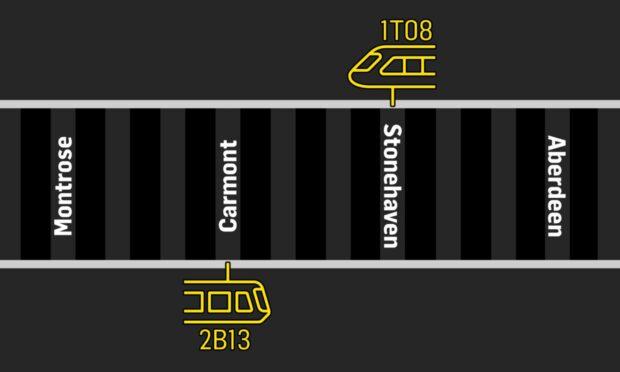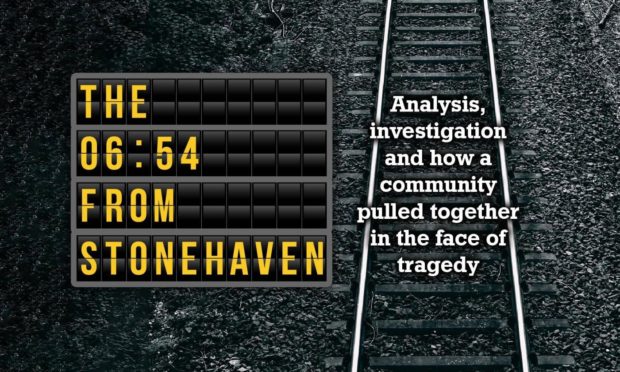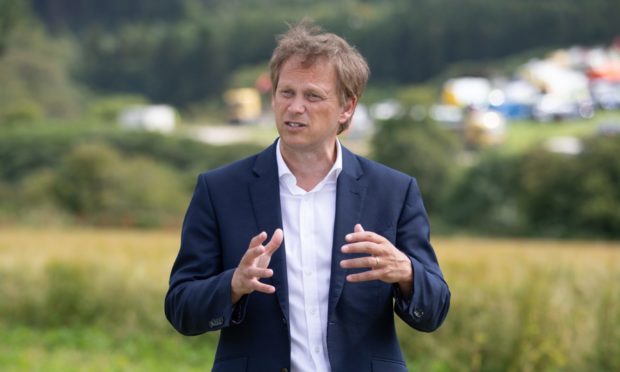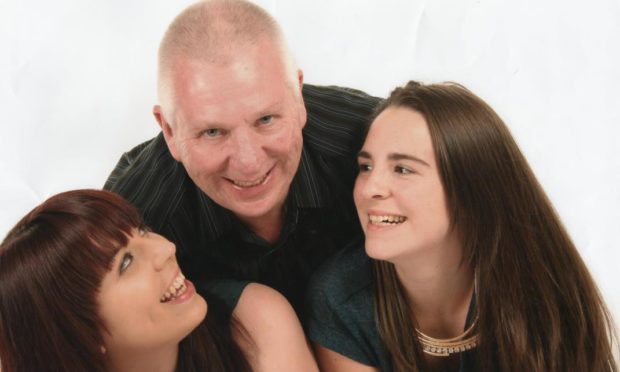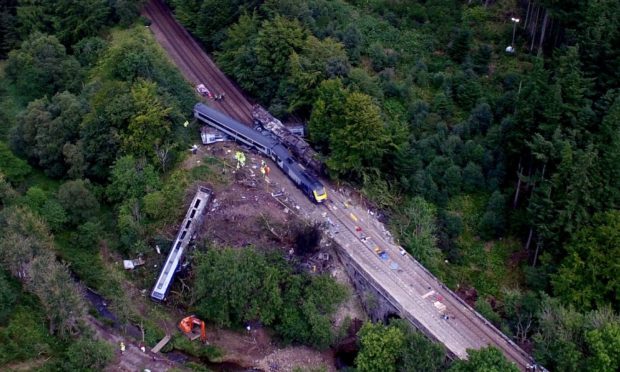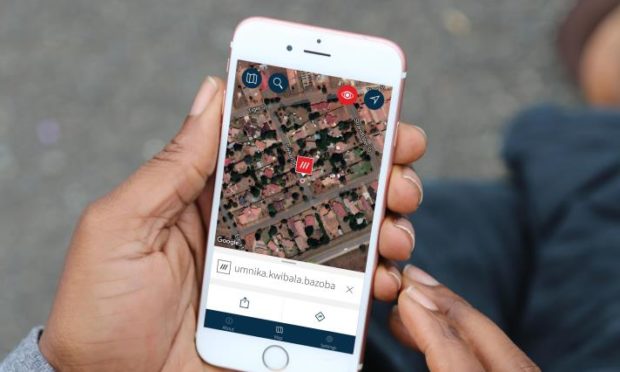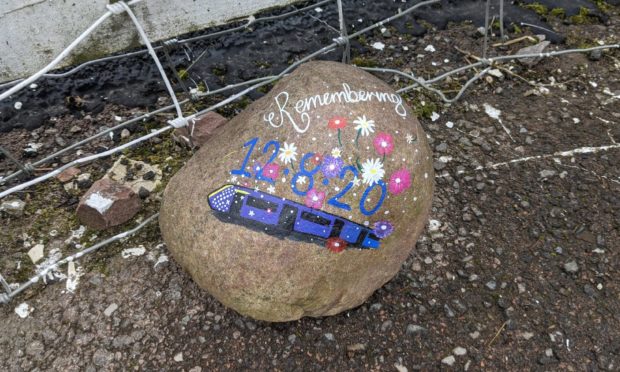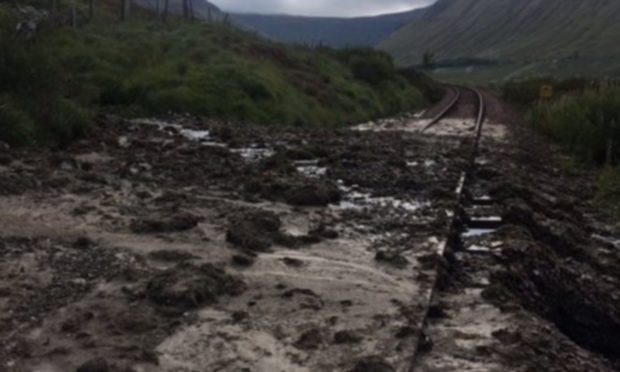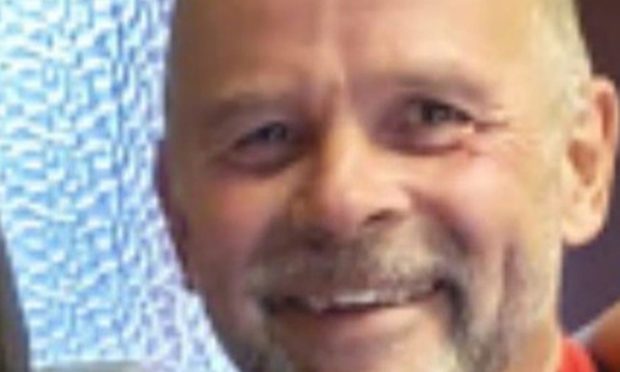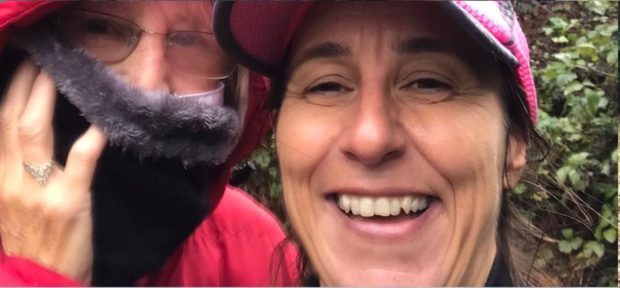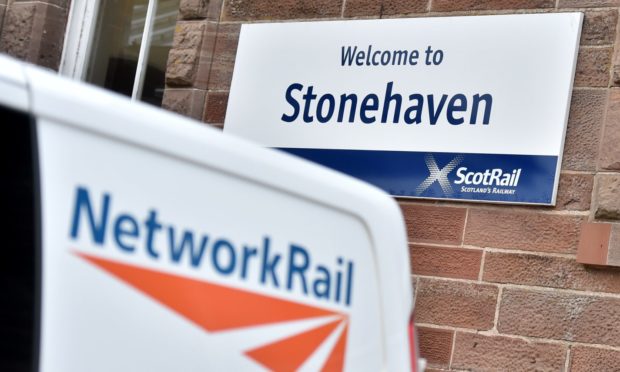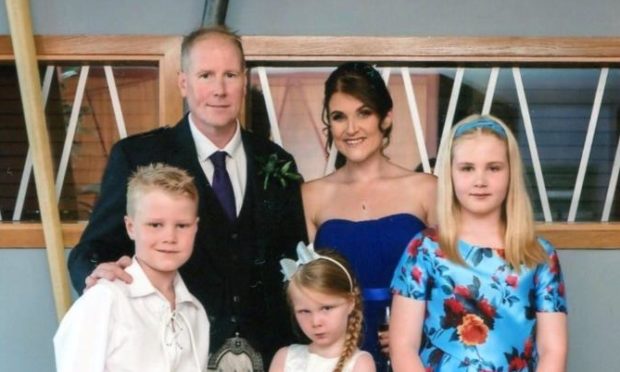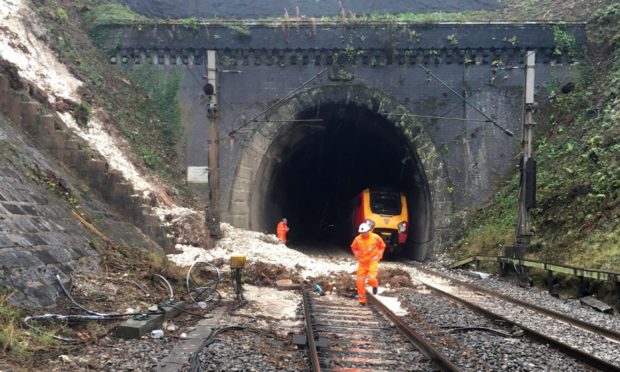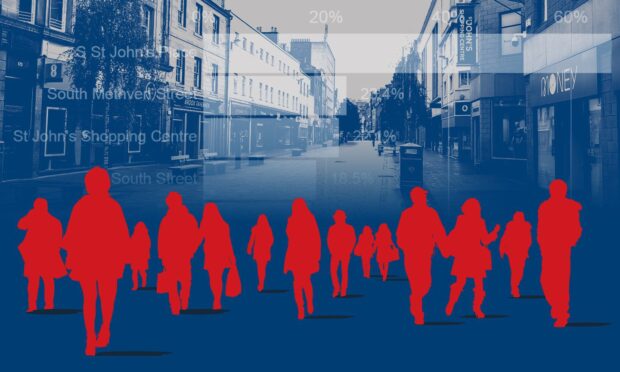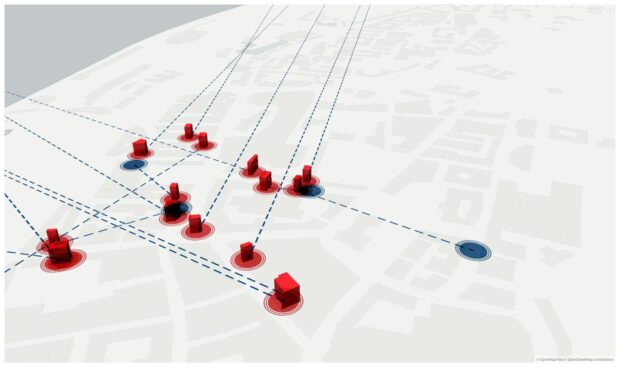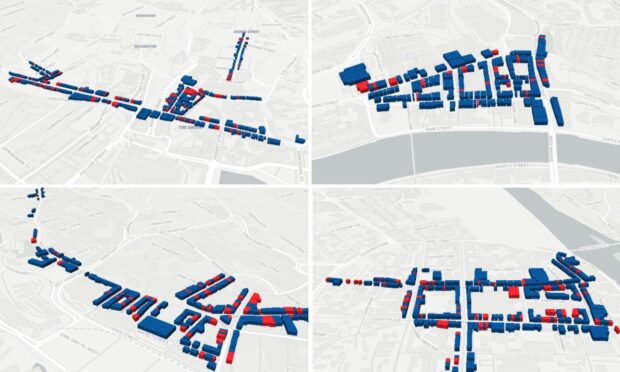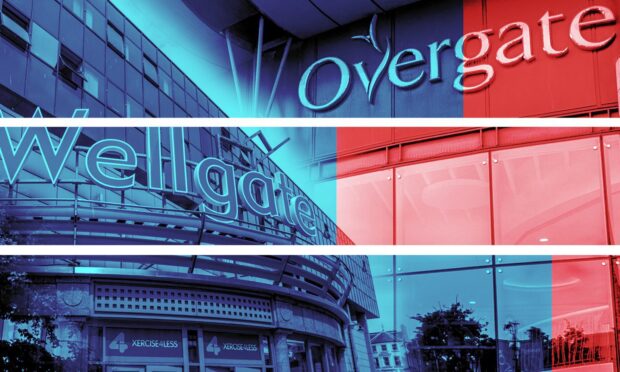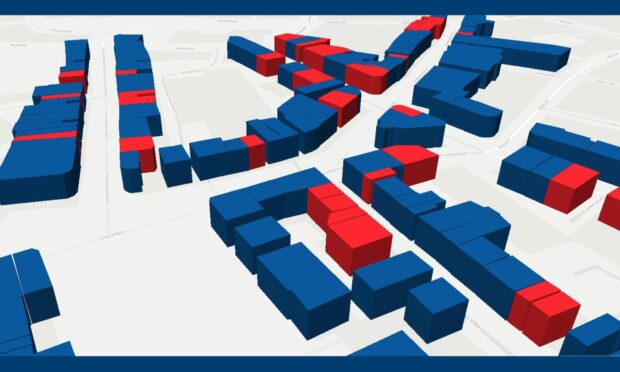The events of August 12, 2020 will stay in our hearts and minds forever – but what actually happened that day?
Here, we look at the sequence of events on the morning of the Stonehaven rail crash, considering which trains ran, which trains didn’t and how weather played a part in the day’s events.
5am – Passengers arrive at Aberdeen station.
5.06am – The first train departs Aberdeen on time, and runs to Montrose without incident.
5.30am – Dark clouds gather over Angus.
5.36am – The 5.36am service from Aberdeen to Glasgow is cancelled due to heavy rain flooding the railway.
5.39am – Due to heavy rain, the 5.39am service from Dundee to Inverness cannot leave. Instead it is listed to begin at Aberdeen.
5.47am – The 5.47am service from Aberdeen to Edinburgh is cancelled due to heavy rain flooding the railway.
6.30am – Heavy rain is covering all of the north-east except the Buchan Corner, with thunderstorms in some areas.
6.38am – The 6.38am Aberdeen to Glasgow Queen Street train departs Aberdeen, driven by Brett McCullough.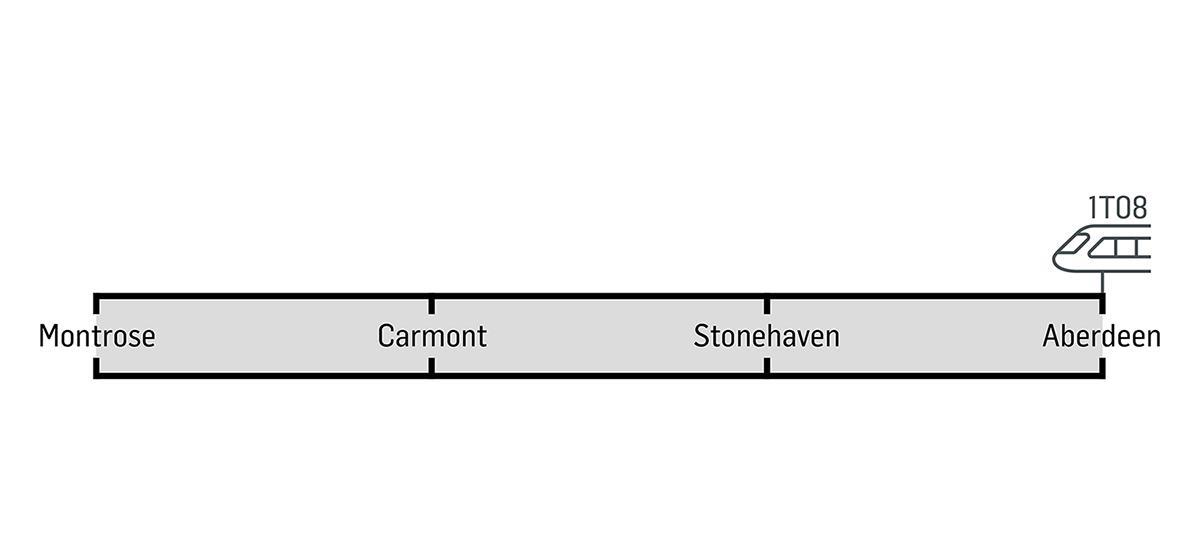
6.39am – The 6.39am Montrose to Aberdeen service departs Montrose. The train’s service number is 2B13.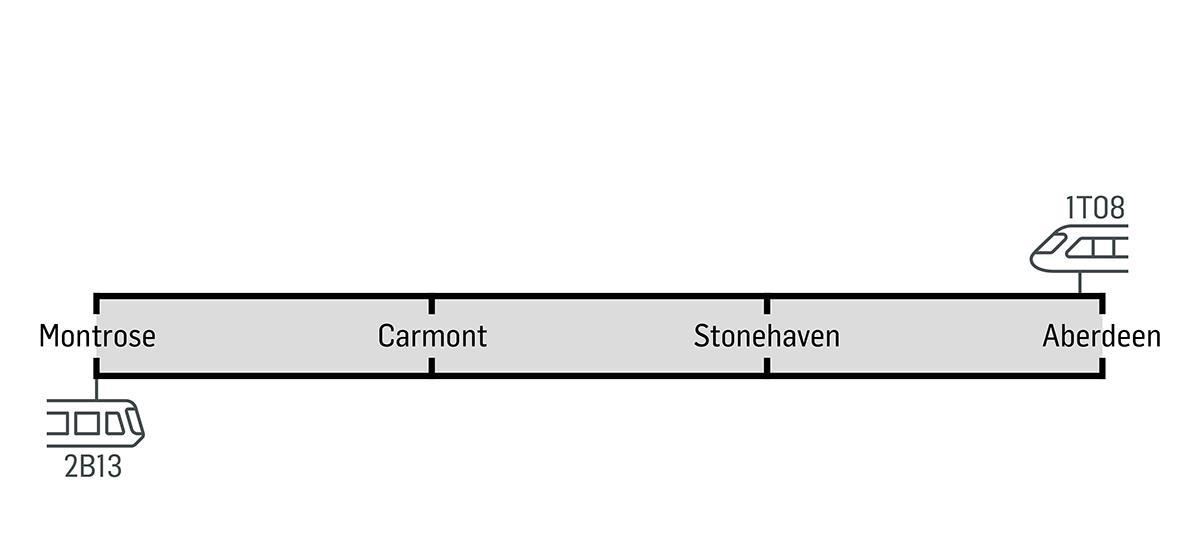
6.54am – Brett’s train collects passengers in Stonehaven and leaves the station on time. It is now the 6.54am service from Stonehaven.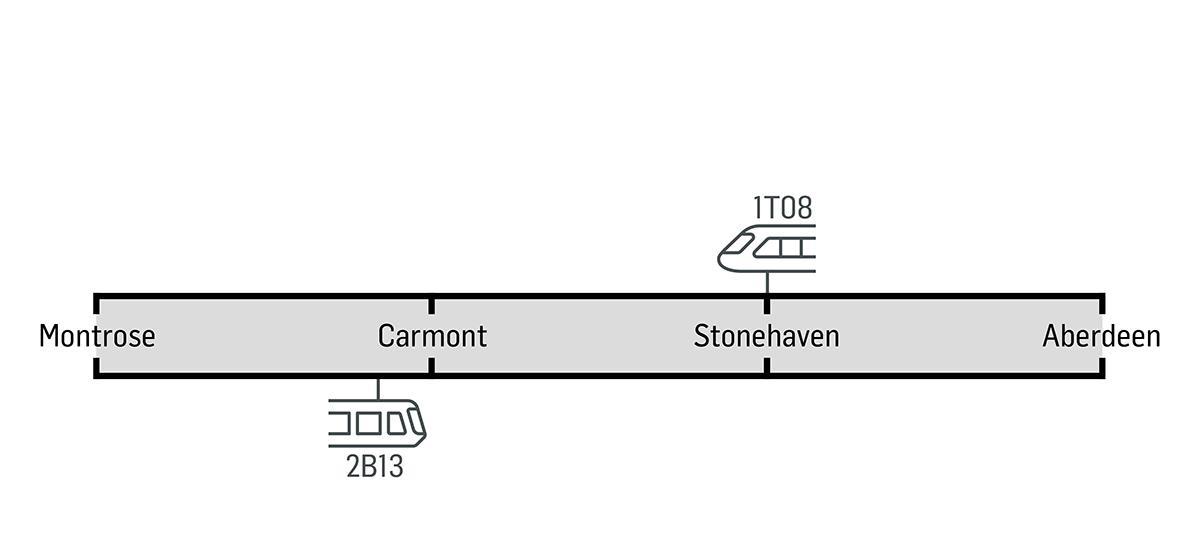
7am – After leaving Montrose, train 2B13 arrives at Carmont. The driver spots debris on the other side of the track. He stops and radios the signalman at Carmont Signal Box, who then alerts Brett. Brett stops 1T08 at Carmont.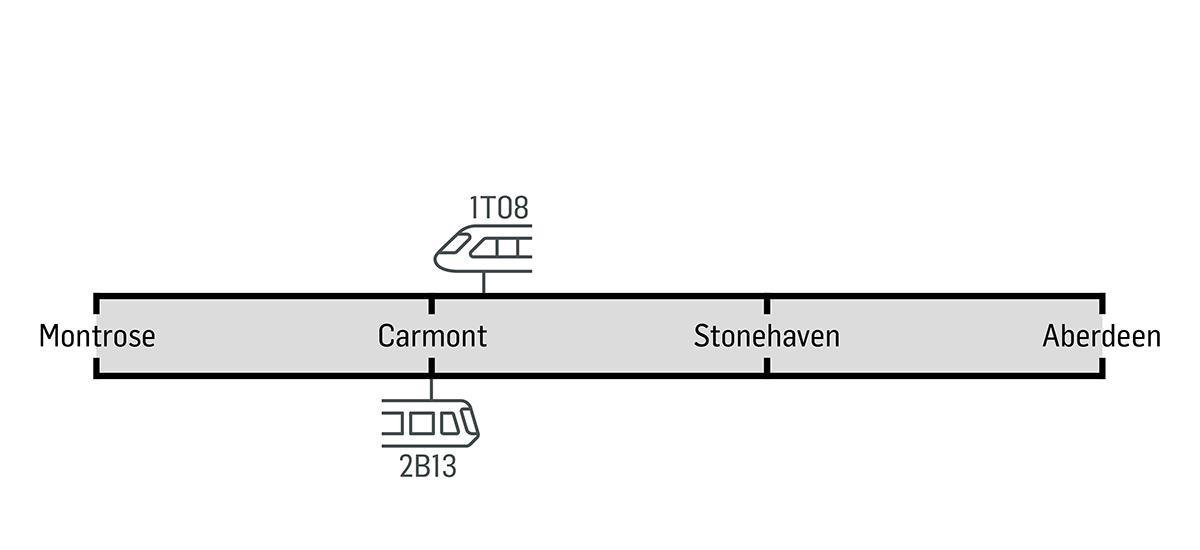
7.05am – Without incident, 2B13 passes what would later be a crash scene.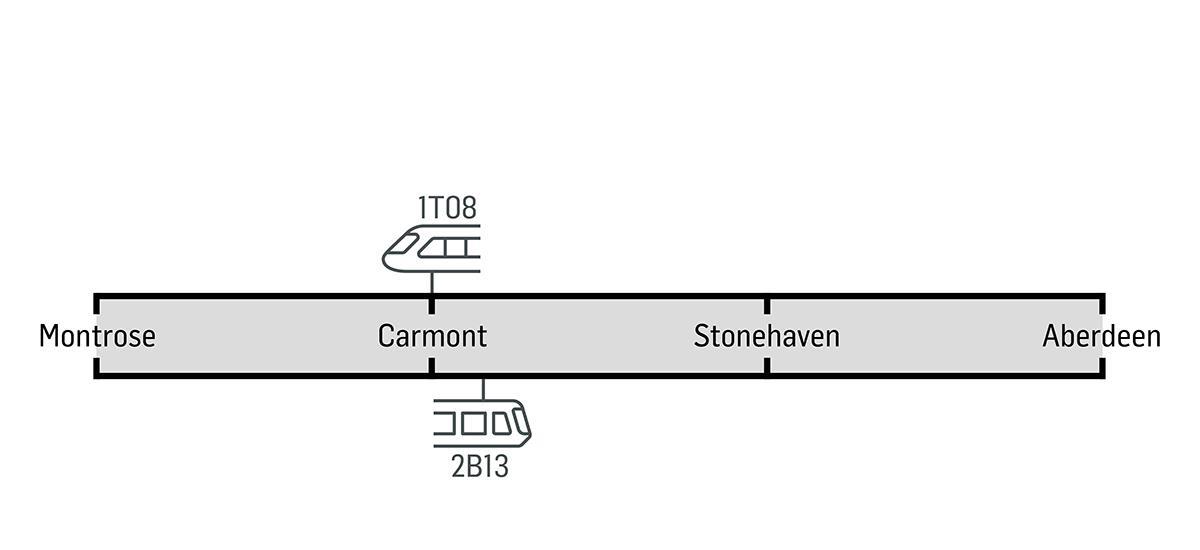
7.14am – 2B13 arrives at Stonehaven station, lets off its passengers and is taken out of service.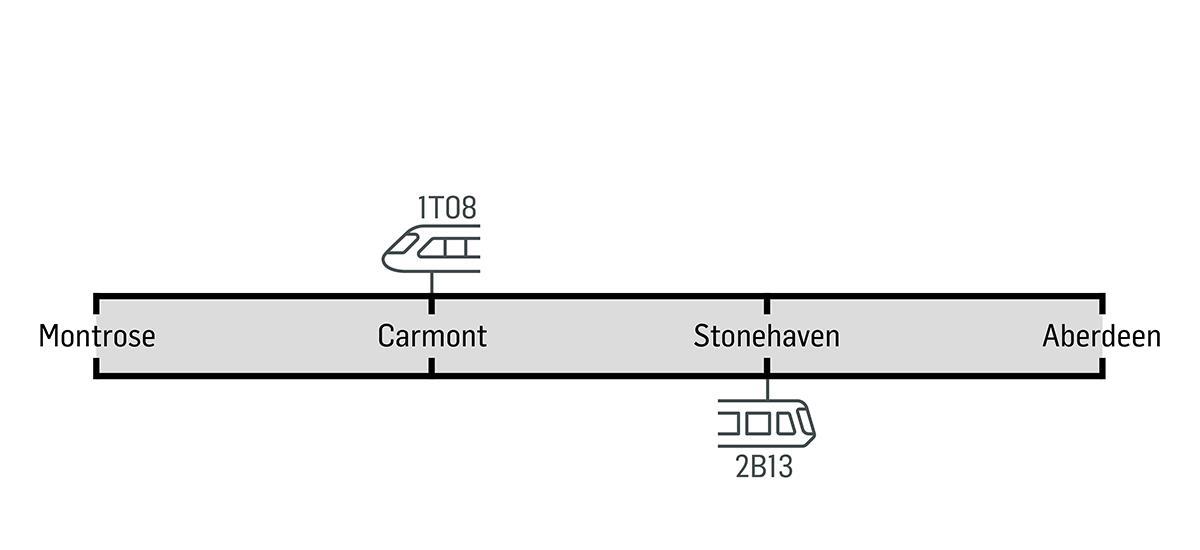
7.15am – As dark skies remain, rail staff must decide if Brett’s train should proceed to Glasgow or return to Stonehaven – but that needs a mobile operations manager to come out.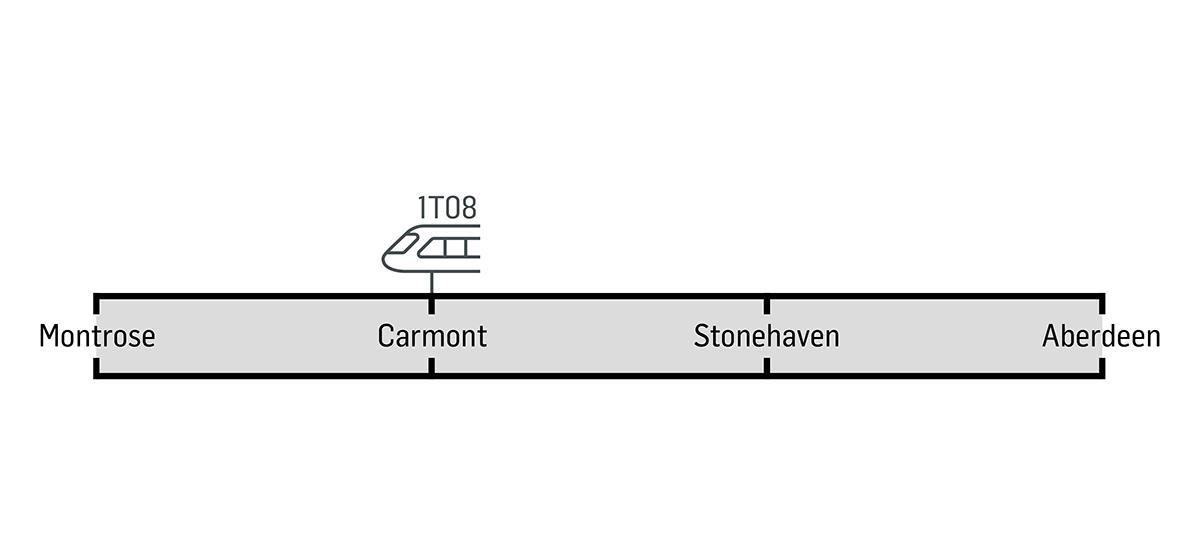
9.25am – Rain has cleared and skies are bright. Permission is given for Brett’s train to head back to Stonehaven.
9.34am – Brett’s train begins to move.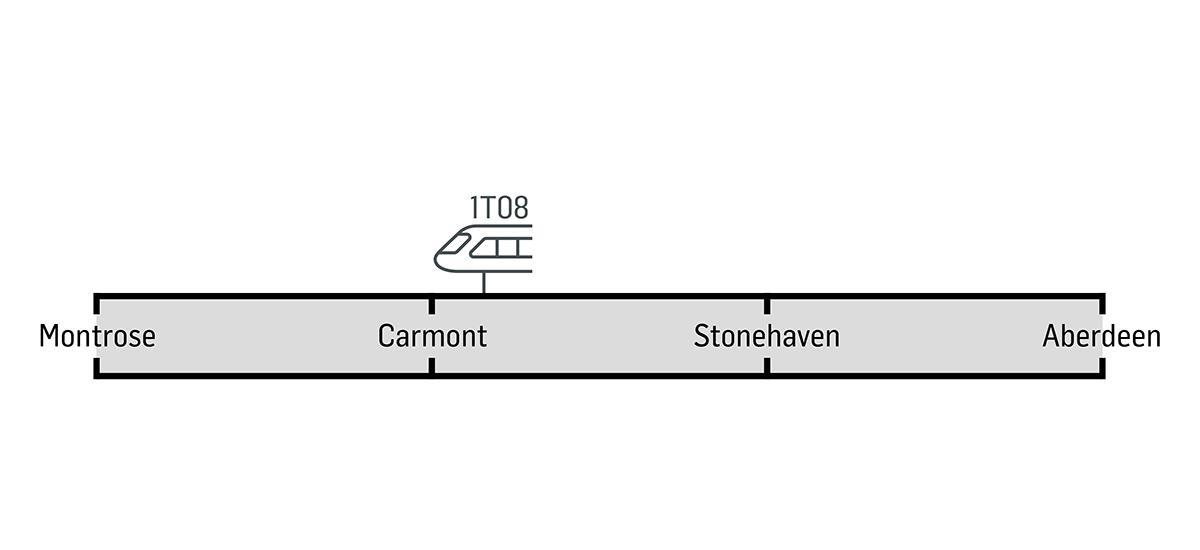
9.36am – Brett’s train crosses over from the Glasgow-bound side of the line to the Stonehaven-bound side of the line. It reaches 72.8mph and travels 1.4 miles. At some point between 7.10am and 9.35am – a period in which nobody had seen the crash scene – rainwater had overwhelmed a drain by the side of the track, washing gravel onto the line.
9.38am – The train comes round a bend, strikes the gravel. Rather than following the track to the right as it curves, the train continues straight and strikes a bridge. The power car goes over the bridge and falls down an embankment. The second passenger car falls on top of the first. The third one falls down the embankment and the fourth one stays upright, along with the rear power car.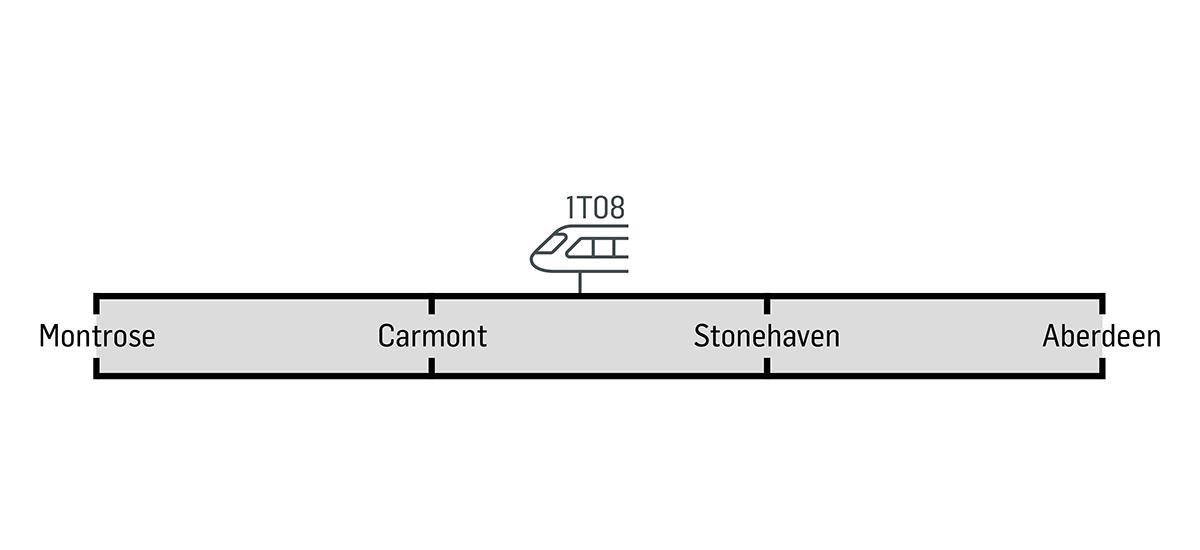
9.40am – Police receive the first emergency call. One was from a Network Rail worker part of a team who were on site, preparing to do scour protection work at the foot of the bridge where the crash happened. Network Rail staff used the what3words app to pinpoint the location of the crash for police.
9.41am – Nicola Whyte, a ScotRail worker who had been travelling on the train off duty, frees herself from the wreckage and travels on foot between one and three miles to use a lineside phone to raise the alarm – and ensure all other trains are stopped.
Around 9.50am – The first emergency services workers begin to arrive. PC Liam Mercer and PC Eilidh McCabe are first on the scene. They are joined by police colleagues, firefighters, paramedics, air ambulance workers and coastguard rescue volunteers. The pair were later thanked by Prince Charles.
